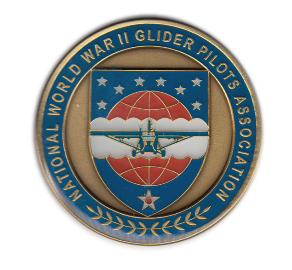|
November 2017
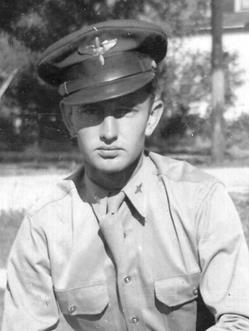 |
Robert S SWENSON Final FlightJul 10, 1923–Nov 28, 2017 Biographical War History
Biographical War History Robert will be missed by the
members of the Association
but his loss will be felt
most deeply by his fellow veterans,
his band of brothers.
High Flight, brother. |
* * *

No Photo Available | |
Arthur Ray SMITH Final FlightJan 22, 1920–Nov 19, 2017 Biographical War History
Biographical War History Arthur will be missed by the
members of the Association
but his loss will be felt
most deeply by his fellow veterans,
his band of brothers.
High Flight, brother. |
* * *
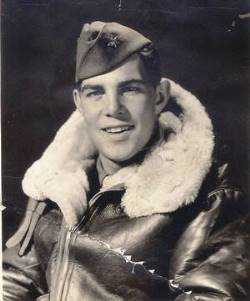 |
Thomas Joseph KILKER Final FlightNov 5, 1919–Nov 17, 2017 Biographical War History
Biographical War History Thomas will be missed by the
members of the Association
but his loss will be felt
most deeply by his fellow veterans,
his band of brothers.
High Flight, brother. |
August 2017
 |
Louis Gillespie ERSKINE Final FlightFeb 15, 1921–Sep 2, 2017 Biographical War History
Biographical War History Louis will be missed by the
members of the Association
but his loss will be felt
most deeply by his fellow veterans,
his band of brothers.
High Flight, brother. |
August 2017
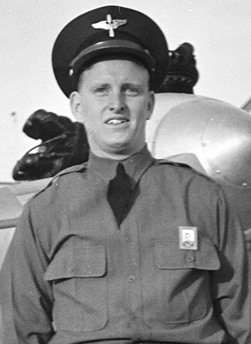 |
Donald George EHR Final FlightNov 21, 1919–Aug 23, 2017 Biographical War History
Biographical War History Donald will be missed by the
members of the Association
but his loss will be felt
most deeply by his fellow veterans,
his band of brothers.
High Flight, brother. |
July 2017
 |
Emil Douglas FLYNN, Final FlightJun 5, 1923–Jul 23, 2017 Biographical War History
Biographical War History Emil will be missed by the
members of the Association
but his loss will be felt
most deeply by his fellow veterans,
his band of brothers.
High Flight, brother. |
March 2017

No Photo Available | |
James M DELORETO Final FlightSep 10, 1916–May 29, 2017 Biographical War History
Biographical War History James will be missed by the
members of the Association
but his loss will be felt
most deeply by his fellow veterans,
his band of brothers.
High Flight, brother. |
* * *
Ninety-Fourth Flying Traning Squadron, Air Force Academy:
G Wing Ceremony May 17, 2017
Don Ehr enlisted in the Army Air Corps on February 22, 1942 and graduated from advanced glider flight school on February 28th 1943 as a 2nd Lt. and was assigned as a glider pilot flight instructor. Don instructed in basic glider flight instruction at Wickenburg Arizona. He was then transferred to South Plains Army Air Field, Lubbock, Texas, where he instructed in advanced glider flight technique. Don was promoted to 1st Lt. on 22 February 1945.
In spring 1945, Don was transferred to Laurinburg Maxton for more tactical training in preparation to deployment to the ETO. During Don’s time as an instructor he also was involved in the testing of snatching gliders by air. This is the method in which a glider on the ground is snatched from the ground into the air by usually a C-47. In six seconds you go from 0 to 160 miles an hour. He certified to fly co-pilot in a C-47 to snatch the glider and was also participated as the pilot in a glider being snatch.
In May of 1945 he received orders to board a ship for the Europe on May 9th but the order was rescinded on May 8th due to the surrender of the Axes Forces. So he was to await orders for the Pacific but the dropping of the bomb released him of further combat duty.
He received an accommodation for his glider training techniques and ground school instruction in July of 1945. After the war, Don returned to College and then enlisted in the Air Force Reserves and after 20 years retired in as a Captain.
When the invitation came from the 94th Training Flying Squadron Don Ehr was the perfect person to talk to the Cadets about his teaching
experiences during WWII in the CG-4A glider.
On Tuesday, 16 May 2017, Don entered the briefing/ready room at the Air Force Academy to a standing applause by the cadets. These cadets who are graduating after two years (freshman and sophomore years) of glider training would be the ones to receive their G Wings on Wednesday 17 May 2017 to become, for the next two years, instructors training the next generation of glider pilots.
All cadets must fly a minimum of four glider sorties to graduate. Don talked to the cadets about his experience in training pilots and what he
felt was the most important aspects of glider training.
After Don spoke the cadets showed Don and his contingent (Joan and Robert Abrahamson and Patricia and Bruce Overman) their flying skills in their gliders. And what skills they have! Don was impressed with both their skills and the type of glider they were using. The rest of us were enraptured by what they were doing.
On Wednesday, Cadet Samantha Reed, took us all over campus. What a great tour! The facilities and grounds were magnificent but the most impressive aspect of the tour was our guide. If Cadet Samantha Reed’s courtesy, professionalism and confidence is representative of her fellow cadets, and we suspect that it is, then the future of the USAF is in GREAT shape!
Wednesday evening the cadets received their G Wings at a formal dinner. Don and the WWII glider pilots’ efforts during the war was recognized many times throughout the evening. The ceremony was very special for each Cadet to receive the same G Wings that the WWII glider pilots wore and that represent Guts:
The announcement of the G Wings was preceded by the following statement from the Cadet Master of Ceremonies:
In the Army Air Force Guide the glider pilot rating was awarded for the successful completion of a prescribed advanced course of glider pilot training at
an Army Air Corps glider special service school. The emphases of the early glider program was to produce a basic skill gilder pilot who would enter troops and equipment into a combat zone. The Army Air Corps program graduated a glider pilot with a planned 10 to 15 hours of training. Today the Air Force Academy program qualifies young cadet glider instructor pilots in approximately 25 hours of flying training. Surprisingly much of the Army Air Corps glider pilot ground training is very similar to the current cadet soaring operating experience. The only distinct exception between our times was the Army Air Corps war time need to fly training sorties at night. Man, could we try that one day? However, despite any comparisons that might be made we stand proudly here today acknowledging one commonality, the men and women of the past and of today have all stepped up to the challenge of learning to fly in an unpowered aircraft, where the words “Go around” are not part of our vocabulary. Now Captain Norton along with Cadet 1st Class Leonard and 1st Class Bigoto the M day Flight Commanders for the academic year 2017 will present their up graders with their G Wing. Additionally, Colonel retired Wally Miller will present the cadets with a gift.
|
March 2017
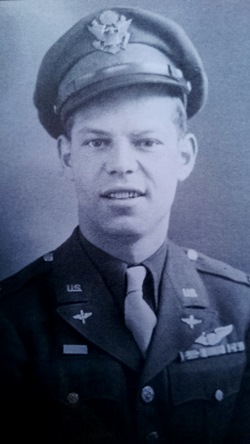 |
Melvin N PLINER Final FlightJul 13, 1921–Mar 27, 2017 Biographical War History
Biographical War History Melvin will be missed by the
members of the Association
but his loss will be felt
most deeply by his fellow veterans,
his band of brothers.
High Flight, brother. |
* * *

No Photo Available | |
James P TOWNSEND, Final FlightMay 17, 1920–Mar 19, 2017 Biographical War History
Biographical War History James will be missed by the
members of the Association
but his loss will be felt
most deeply by his fellow veterans,
his band of brothers.
High Flight, brother. |
* * *
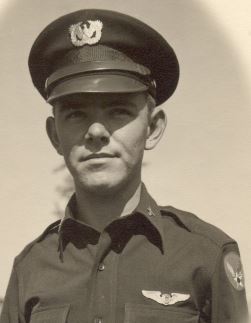 |
George Irvin THEIS, Final FlightOct 4, 1924–Mar 18, 2017 Biographical War History
Biographical War History George will be missed by the
members of the Association
but his loss will be felt
most deeply by his fellow veterans,
his band of brothers.
High Flight, brother. |
* * *
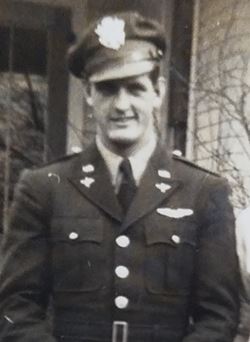
The family has asked instead of flowers donations in his name be made to the Silent Wings Museum.
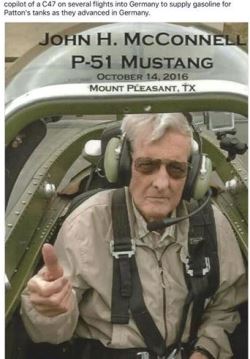
John took his last flight in a P51 at the 2016 reunion.
|
John H MCCONNELL, Final FlightJul 1, 1924–Mar 8, 2017 Biographical War History
Biographical War History John will be missed by the
members of the Association
but his loss will be felt
most deeply by his fellow veterans,
his band of brothers.
High Flight, brother. |
January 2017
|
The veterans of the Association wish you all the best in this New Year.
In celebration of the New Year we are also launching our online roster listing the Glider Pilots of WWII. The data in this online listing has been uploaded from the legacy database and holds over 6000 records. The legacy DB was begun by the Glider Pilots in the 1970s and the records come from the member veterans as well as the books of graduating classes. Each name is a link that goes to their bio-file. Currently the research team is limiting the information that is outputted to the public mainly because of interpretation. The information provided allows family member to determine if the veteran listed is their relative. If you need further information on a glider pilot then you may contact the Research Team where they can provide, in many cases, additional information on training, units, missions, reports and awards. If they can make contact with family members it is then hopeful that they can add additional documents and photographs.
One caveat: The database does not list the active members. Of course if you are a member of the National WWII Glider Pilots Association you already have a roster of all current members.
This has been an ongoing project for over a year and will continue to grow and change as time goes on including photographs that are still pending upload.
Thank you so much for your support and caring for the Glider Pilot Program.
Sincerely
Otto Lyons,
Executive Council Chairman
WWII Glider Pilot
15th TC Squadron/61st TC Group
BioFiles
Note: this statement was written prior to Leon's passing.
|
|
2019
2018
2017
2016
2015
2014
2013
Christmas
P-51
BronzeStar
|
























